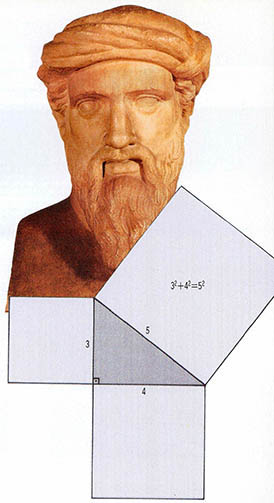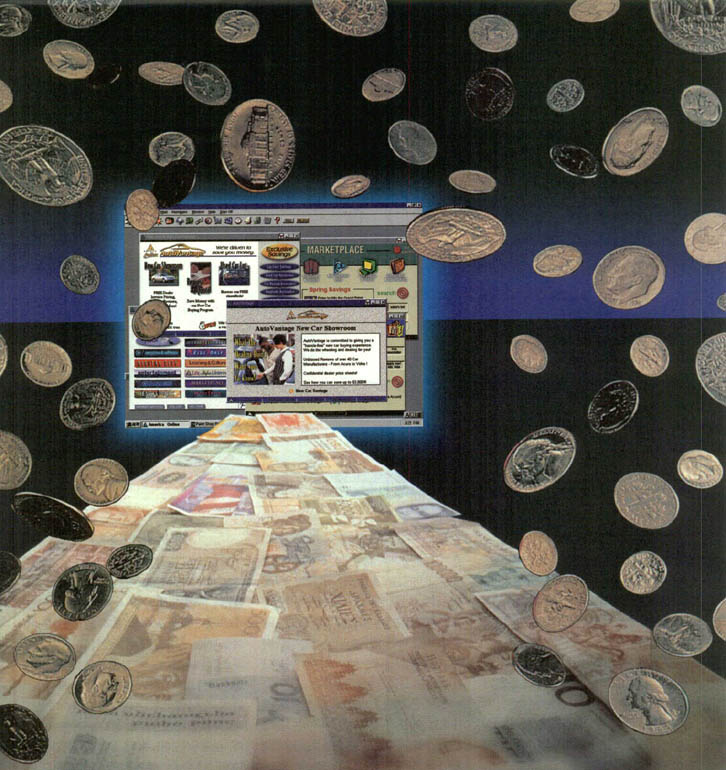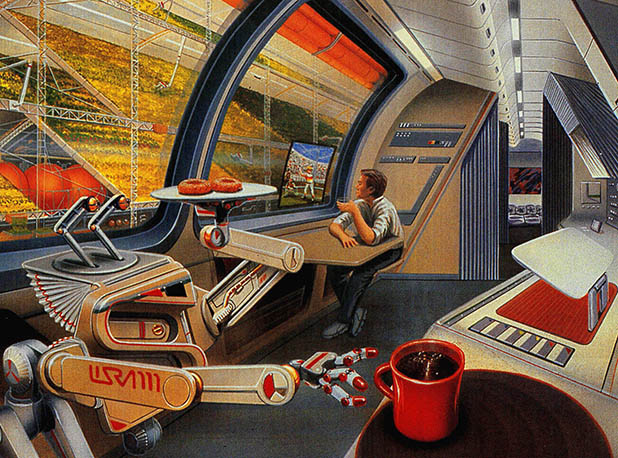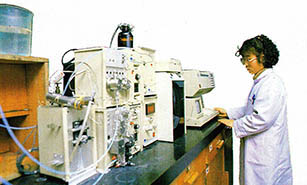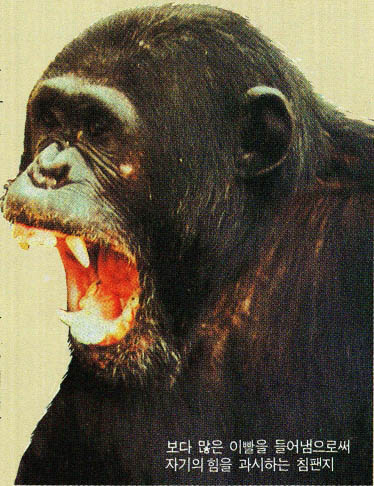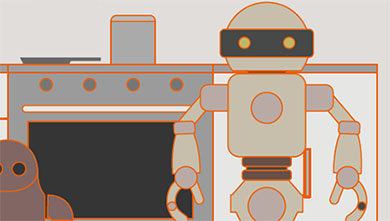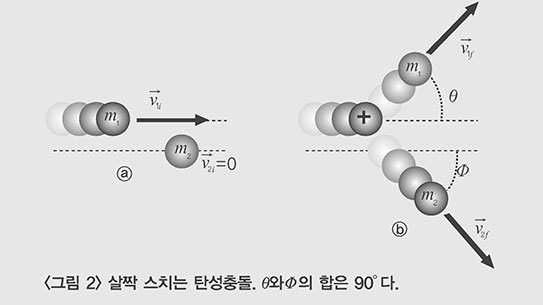고대 그리스 시대 이래로 철학자들은 다음 질문에 답하기 위해 노력을 기울여 왔다. 즉 우주를 구성하고 있는 기본체들은 무엇일까?
오늘날의 과학자들도 여전히 이 질문에 답하려고 하고 있지만 최근의 자료도 과학자들을 이해시키지 못하고 있다. 문제가 숨어버리는것 같기도하다.
예를 들어, 우주는 많은 원소들로 이루어져 있는데, 이 원소들은 통상적인 방법으로는 더이상 단순하게 될 수 없는 단순물질이다. 과학자들은 100개 이상의 원소를 확인했다.
각 원소는 원자들로 구성되는데, 원자는 너무 작아서 1인치 길이로 나란히 늘어놓는데에도 약 2억 5천만개의 원자가 소요된다. 그러므로 우리는 우주가 백개 이상의 서로 다른 원자들로 이루어져 있음을 알 수 있다.
그러나 정말 원자가 우주를 구성하고 있는 그 무엇일까? 혹은 원자 그 자체도 더욱 작고 단순한 물체로 만들어진 것은 아닐까?
20세기 초, 과학자들은 원자도 하나의 구조를 지니고 있음을 발견하였다. 원자의 외곽에는 전자가 포함되어 있으며 중심에는 원자핵이 있는데, 원자핵은 미세하여 하나의 원자만큼 늘리는데에 일렬로 나란히 세운 약 10만개의 원자핵이 소요된다.
전자는 그것이 어떤 원자에서 발견되든 모두 같다. 그러나 원자핵은 다르다. 모든 원자는 각각 그 자신만의 핵을 갖는 것이다.
그렇지만 원자핵은 다시 양성자와 중성자라는 두가지 종류의 입자로 구성되며, 모든 양성자와 중성자들은 그것이 발견되는 원자핵이 어느 것이든 관계없이 같다.
1930년대 초에 이르러서는 우주의 물질은 무한한 다양성은 있지만 세가지 형태의 입자 즉 전자와 양자 그리고 중성자로 구성되었을 것이라고 보여지게 되었다.
그러나 더 복잡한 상황이 전개되었다. 현실적으로 전자에도 세가지 형이 있으며 이들 각각은 또 다른형의 중성미자와 관련되어 있는 것이다. 그리고 이들 여섯가지는 모두 반전상(反轉像)을 가진다. 이것들은 함께 12개의 전자형 입자(경입자라고 불린다)를 만들며, 그 각각의 하나가 우리가 알고 있는 한에서는 더 단순한 그 어떤 것으로도 쪼개질 수 없는 ‘기본입자’인 것이다. 과학자들에게는 경입자 12개가 다루기에 많은 것이 결코 아니다.
중성자와 양성자는 다르다. 우선, 중성자와 양성자는 전자보다 1천8백 배를 약간 상회할 정도로 무겁다. 이에 따라 우주의 99.95%는 이것들이 차지하고 있는것이다. 그리하여 과학자들은 전자보다 무거운 다른 모든 입자들, 문자그대로 수백배 무거운 입자들을 확인하기 시작했다.
이것들은 너무 많은데다가 우주를 복잡하게 만든다고 여겨져 과학자들은 다시한번 이들 입자가 보다 더 작고 단순한 입자들로 구성된 것이 아닌가 의심할 수 밖에 없었다.
1960년대 과학자들은 무거운 입자들의 블록재(材)라고 할 수 있는 새로운 입자가 존재함을 가정했다. 이 새로운 입자들을 과학자들은 쿼크라고 불렀다. 그들은 중성자, 양성자 그리고 더 무거운 여타의 입자들이 각각 세 개의 쿼크로 이루어진다고 이론화하였다. 중성자와 양성자보다 가벼운 입자(소위 중간자)들은 각각 두개의 쿼크로 구성된다는 것이다.
12개의 상이한 경입자가 있는 것처럼 서로 다른 12개의 쿼크가 존재한다는 것이 밝혀지고있다. 또 쿼크도 역시 기본입자라고 생각되어지고 있다. 이제 우리는, 무한히 다양하게 존재하는 전우주는 서로 다른 경입자 12개와 쿼크 12개로 구성되며 자연계에서 흔히 발견되는 모든 입자들은 두 종류의 경입자와 두종류의 쿼크가 조합하여 구성된다는 것을 알수 있다는것이다. 정말 간단하다. 그러나 하나의 문제가 있다. 과학자들은 자유경입자를 아주 쉽게 검출할 수 있고 또 그것을 연구할수도 있다. 그러나 자유쿼크는 검출할 수 없다. 전자는 단위전하를 가지고 있으며 마찬가지로 양성자도 단위전하를 가진다. 모든 전하는 이 단위의 배수로서 정해진다. 그러나 과학자들은 쿼크가 분수값의 전하를 가져야 한다고 계산하였다. 우리가 자유상태에 있는 쿼크를 한번도 연구해 본 적이 없다면, 이를 믿을 수 있을까?
사실, 쿼크가 존재한다는것, 또 수학적 편의가 아니라는것을 믿을 수 없다. 가령 1달러는 10다임과 같은 값이지만, 이것이 우리가 1달러짜리 지폐를 찢는다고 해서 그 조각조각안에서 1다임짜리 동전 10개를 찾을 수 있음을 의미하지는 않는다. 1달러 당의 다임은 수학적인 것이다.
자유쿼크를 다른 어떤 입자에도 존재하지 않는 분수값의 전하로써 검증하는 것은 쉽겠지만─그러나 이들 분수값의 전하는 발견된 적이 없다. 1970년대말 몇개가 보고되긴 했지만, 재실험 결과 잘못된 것으로 드러났다.
자유쿼크는 아주 극단적인 조건에서 존재하는 것이 틀림없다. 예컨대 중성자 별 한가운데나 혹은 대폭발 직후. 그러나 어떻게 이런 극단적인 조건을 과학자들이 실험실내에서 만들어 낼 수 있을 것인가?
여기에 약간의 희망은 있다. 만일 우리가 충분히 강력한 원자핵파괴장치를 만든다면, 굉장히 무거운 원자핵을 고에너지 상태에서 충돌시킬 수 있을지 모른다. 그러면 파괴되는 원자핵은 아주 간단히 쿼크들을 방출할 것이고, 과학자들은 혹시 이들 알기 힘든 우주의 기본구성물질들을 잠간 볼 수 있을지도 모른다.
Since the time of the ancient Greeks, thinkers have been trying to answer the question: What are the basic objects making up the universe?
Scientists today are still trying to answer this but the last bit of information continues to elude them. It seems to slip away.
For instance, the universe is made up of a number of elements, simple substances that cannot be made simpler by ordinary chemical methods. Scientists have identified more than 100 of them.
Each element is made up of atoms, objects so tiny it takes about 250 million of them lined up side by side to stretch an inch. We can say, therefore, that the universe is made up of more 100 different types of atoms.
But are the atoms really what the universe is made of? Or are the atoms themseleves made up of still smaller and simpler objects?
At the beginning of the 20th Century, scientists discovered that atoms have a structure. The outskirts of the atom contain electrons and at the very center is an atomic nucleus, so tiny that it takes about 100,000 of them lined up side by side to stretch across a single atom.
Electrons are all alike, no matter what kind of atom they are found in. Atomic nuclei, however, are different,. Every kind of atom has its own kind of nucleus.
However, atomic nuclei are, in turn, made up two kinds of particles, protons and neutrons, and all protons and neutrons are the same regardless of which atomic nuclei they are found in.
By the early 1930s, it really seemed as though the matter of the universe, in all its apparently infinite variety, might be made up of three types of particles:electrons, protons and neutrons.
But things got more complicated. Actually, there are three varieties of electrons, each associated with a variety of neutrino, and all six of these have a mirror image. That makes 12 electron-type particles(called “leptons”) all together, and each one is a “fundamental particle” that, as far as we know, cannot be broken up into anything simpler. For scientists, 12 leptons are not too many to handle.
The neutron and proton are different. In the first place, neutrons and protons are a little more than 1,800 times as massive as electrons, so that they represent about 99.95 percent of the universe. Then, too, scientists began to identify all sorts of other particles that were more massive than electrons, literally hundreds.
These were too many and seemed to make the universe so commplicated that once again scientists had to wonder if these particles were made up of still smaller and simpler ones.
In the 1960s, scientists postulated the existence of new particles that are the building blocks of the massive particles. They called these new particles quarks. Neutrons, protons and other particles even more massive, they theorized, are made up of three quarks each.
Particles lighter than neutrons and protons(so-called “mesons”)are made up of two quarks each.
It turns out that there are 12 different quarks, just as there are 12 different leptons, and the quarks, too, seem to be fundamental particles. Now we can say that the entire univese in all its infinite variety is made up of 12 different leptons and 12 different quarks and all the particles commonly found in nature are made up of some combination of two kinds of lepton and two kinds of quarks. That's simple enough.
There is one problem, though. Scientists can detect free leptons very easily and can study them. But they cannot detect free quarks. The electron has an electric charge of one unit, and so has a proton. All elecrtic charges come as multiples of that unit. Scientists have calculated, however, that quarks must have fractional electric charges. Can we be sure of that if we've never studied them in their free state?
In fact, we can't even be sure they exist at all and are not just mathematical conveniences. For instance, we know that a dollar is the equivalent of 10 dimes, but that doesn't mean that if we tear up a dollar bill we will find 10 metal dimes in the shreds. The dimes in a dollar are mathematical.
It would be easy to identify a free quark by its fractional electric charge, which doesn't exist in any other kind of particle - but those fractional charges have never been found. Some were reported in the late 1970s, but when the experiments were repeated, it turned out the report was mistaken.
Free quarks must exist under very extreme conditions - at the center of neutron stars, for instance, or immediately after the big bang. But how can scientists reproduce such extreme conditions in the laboratory?
There is a little hope here. It may be possible to force particularly massive atomic nuclei into collisions at enormous energies, if we built powerful enough atom-smashing machines. The shattering nuclei may then liberate, just briefly, individual quarks, and scientists may possibly catch a glimpse of these elusive fundamental components of the universe. Possibly.
이 기사의 내용이 궁금하신가요?
기사 전문을 보시려면500(500원)이 필요합니다.
1988년 04월 과학동아 정보
🎓️ 진로 추천
- 물리학
- 화학·화학공학
- 천문학







